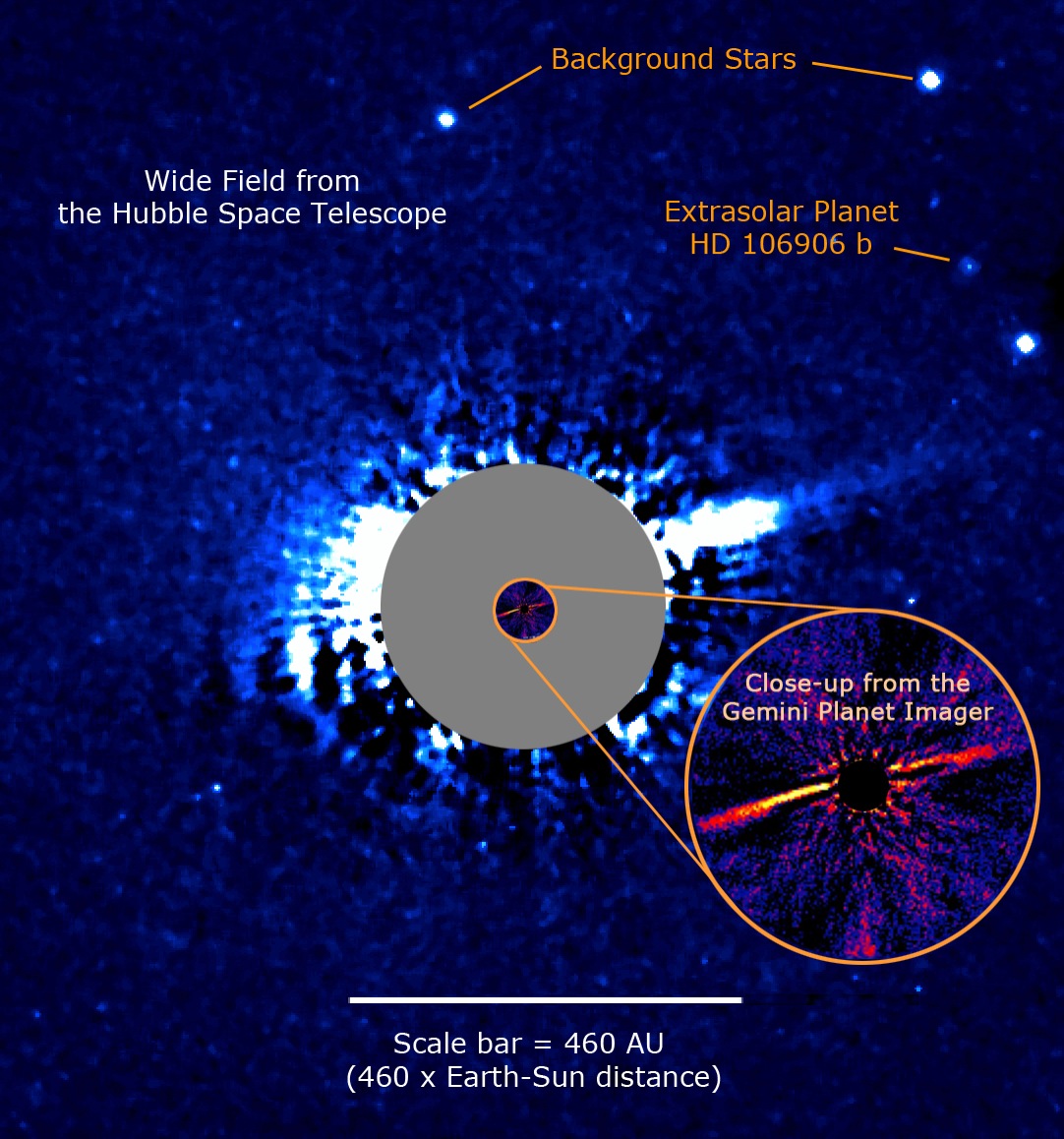 Two direct images of the cometary dust and exoplanet surrounding the young star HD 106906. The wider field in blue shows Hubble Space Telescope data where the star’s blinding light is artificially eclipsed (gray circular mask). The point to the upper right is an 11 Jupiter mass planet located over 650 times the Earth-Sun distance. A new discovery in these Hubble observations is an extremely asymmetric nebulosity indicating a dynamically disturbed system of comets. Surprisingly, the planet is located 21 degrees above the plane of the nebulosity. The circular orange inset shows a region much closer to the star that can only be detected using advanced adaptive optics from the ground-based Gemini Observatory. Using the Gemini Planet Imager (GPI), researchers found a narrow loop of nebulosity suggesting that a planetary system formed close to the star, but somehow the architecture of the outer regions is severely disrupted. The investigators also find that the planet HD 106906b may have a dusty ring system of its own, motivating future work with Hubble and ground-based astronomical observatories.
Two direct images of the cometary dust and exoplanet surrounding the young star HD 106906. The wider field in blue shows Hubble Space Telescope data where the star’s blinding light is artificially eclipsed (gray circular mask). The point to the upper right is an 11 Jupiter mass planet located over 650 times the Earth-Sun distance. A new discovery in these Hubble observations is an extremely asymmetric nebulosity indicating a dynamically disturbed system of comets. Surprisingly, the planet is located 21 degrees above the plane of the nebulosity. The circular orange inset shows a region much closer to the star that can only be detected using advanced adaptive optics from the ground-based Gemini Observatory. Using the Gemini Planet Imager (GPI), researchers found a narrow loop of nebulosity suggesting that a planetary system formed close to the star, but somehow the architecture of the outer regions is severely disrupted. The investigators also find that the planet HD 106906b may have a dusty ring system of its own, motivating future work with Hubble and ground-based astronomical observatories.
(Credit: Paul Kalas, UC Berkeley)
 Annotated version of the figure (Credit: Paul Kalas, UC Berkeley).
Annotated version of the figure (Credit: Paul Kalas, UC Berkeley).
